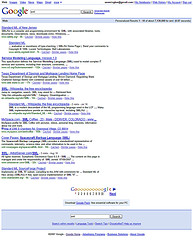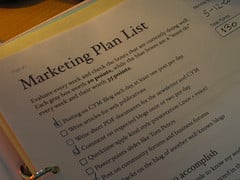4 Insights to Marketing Success
A cook starts with a recipe. A tourist starts with a map. An architect starts with a plan. So why do many small business owners think they can run their business without a marketing plan?
To many small business owners, marketing means advertising - which means big bucks. And yes, some sorts of advertising are costly, but marketing also includes lots of less costly ways to engage prospective customers. With some research, planning, preparation and execution, business owners can be successful with marketing without spending enormous amounts of their budget on advertising.
Do be sure and include some marketing in your budget, but it doesnt need to be a high ticket item. A word of warning: as you look at what your competition is doing, remember that it might not work for you. Dont copy them or customers might mistake you for them.
Here in brief are four main insights that can lead to marketing success:
First: Identify your ideal client
Who are you trying to reach? What is their age, their gender, their marriage status, nationality, their income level, their spending history and where do they get what you are selling from now?
Lets go a step further. What do they value? The more specifics you can think of for your ideal client, the better you will be able to create marketing messages that speak to them.
Second: Create a brand identity
You have to have a way to hook your customer quickly. Your companys name, logo, symbols, website, and social media are your branding tools. You want to stand out from your competition.
If you develop a strong brand, you have a strong foundation for your marketing strategy. Beware: branding is a complicated area. You have to make sure that you have the legal right to use it on the internet for Facebook, Twitter, YouTube, LinkedIn and other social media tools.
So what makes a strong brand? Im glad you asked. The best brands connect with peoples basic emotions. Be original. This will separate you from the herd. Cant come up with just the right idea? Why dont you ask your customers for assistance.
Another caution is that its not a good idea to use trendy words that can quickly become so yesterday. Remember KISS and keep your message simple - no one wants to be overwhelmed.
Third: What are you going to charge?
This is an important question that almost anyone starting a business asks. Unfortunately there is no easy answer. What is the quality of your product or service, the cost to provide it, your location, the market rate others charge, your expected profit and lots more questions.
You might begin by seeing what others are charging in your industry. Dont depend on information that is not timely or accurate. Check the current costs of labor, supplies, overhead. Is this a seasonal business? Not many people want snow cones in North Dakota in the winter. Dont guess or you will inevitably be wrong.
Pricing is as much art as science. Too low and you lose profits. Too high and no one walks into your establishment. A common mistake newbies make is to lower prices to encourage traffic. People who are looking for the lowest prices will abandon you when they find even lower ones. Also they resent it when the costs go up.
If you are in a service business, the low price strategy is even more risky. A service business is limited by the amount of time it takes to deliver the service. No one likes it when the price goes up and you can lose your customers.
There is also a psychological side to pricing as well. If you want people to think you are selling a great product, they expect to get what they pay for. If you charge to low for that great product, they will think the product is inferior.
Pricing needs to be an adaptive process. You can change as conditions change. Besides that you can always experiment with pricing. Who knew? Good merchants, thats who.
Fourth: Make friends with your prospects and clients
In the past relating to your customers was nice, but not all that important. Things have changed now that we are in the Internet generation. Traditional marketing like radio, TV, telemarketing, direct mail, direct mail through the newspapers have all changed into email marketing, Facebook pages and ads, Twitter and blogs.
Some of this stuff is irritating to customers who are bombarded with advertising noise.
What is changing for both clients and businesses is an old-fashioned return to communication with a client one-to-one through a visit, a phone call, business groups, conference calls, Facebook, Twitter and more. People are relating to one another on a personal basis.
Relating to your customers give you a chance to learn about that person so you can make sure that you are offering him or her what he needs at the right price. You also have the opportunity of teaching your customer what to do with what you have sold.
Related articles
- What to Include In Your Marketing Plan (blogs.sitepoint.com)
- Develop a Marketing Breadcrumb Trail to Lead Prospects Home (customerthink.com)
You May Also Like
These Related Stories
4 Insights into Successful Marketing

Dont Run Out of ContentFour Good Ideas





No Comments Yet
Let us know what you think